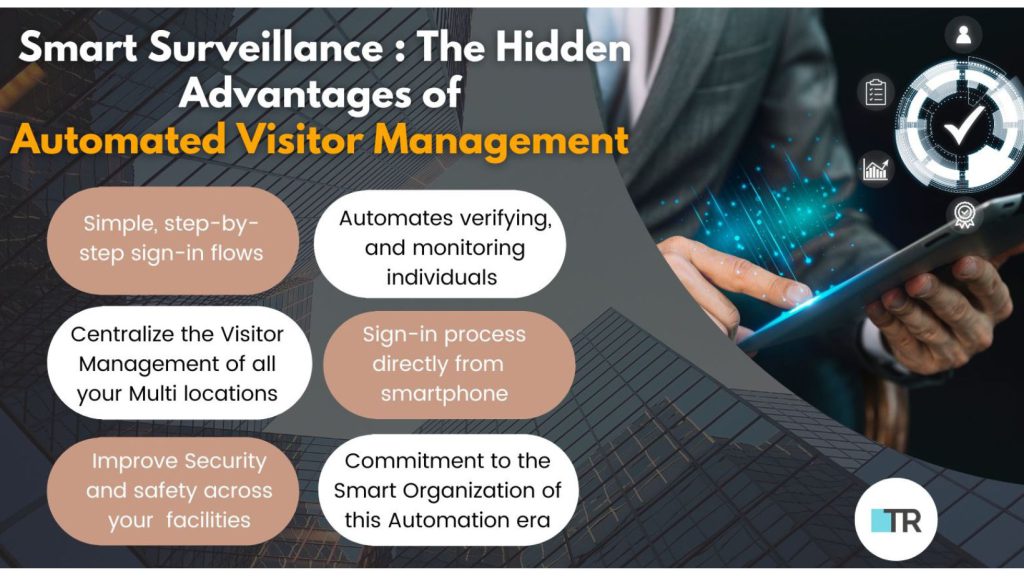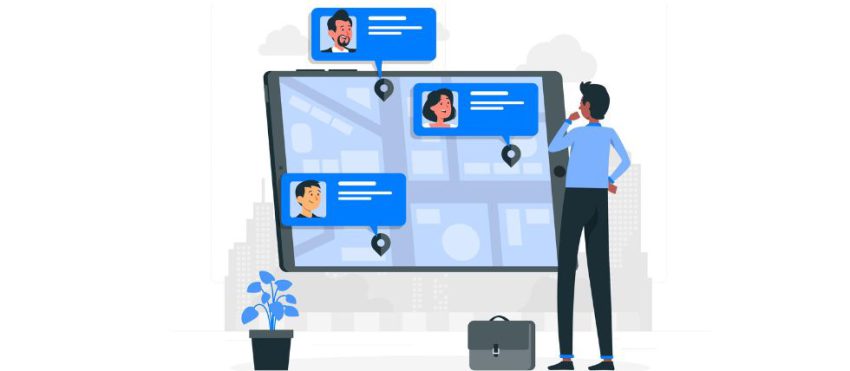The roots of Visitor Management can be traced back to the early 2000’s when organizations sought better ways to manage visitors efficiently. Initially, simple paper-based logbooks were used, but they proved to be time-consuming and lacked adequate security measures.
As technology advanced, the advent of innovative solutions such as Visitor Management Software emerged robustly, offering a more comprehensive approach.
In the mid of the year 2010–2020, visitor management systems gained even more traction. These software solutions enabled organizations to digitize their visitor registration process, creating a more streamlined and professional experience.
Visitor Management Software: A Boon for Businesses After Post-Pandemic Scenarios …
Visitor management software has also emerged as a crucial tool in enabling organizations to navigate the challenges posed post-pandemic.
Cloud computing and Touchless mobile technology became the hallmark of modern visitor management software. Features such as automated check-ins, badge printing, and pre-registration capabilities revolutionized the way visitors were handled before Covid 19 Pandemic.
Additionally, Features such as ID scanning, photo capture, and watchlist screening have proven vital in maintaining a safe environment by reducing the Paper sheets and resources at managing them Manually.
You can measure the effectiveness of this Software with the research report submitted by Market Research Future, which indicated that the visitor management software market was valued at $631 million in 2016 and is projected to reach $1,640 million by the end of 2023, reflecting a compound annual growth rate (CAGR) of 14.4%…

Isn’t this growth skyrocketing?
With the rise of cloud computing and mobile devices, visitor management software entered a new era. Cloud-based solutions allowed organizations to store visitor data securely, access it remotely, and integrate with other business systems seamlessly. In the 21st Century, 72% of businesses cited enhanced security as a critical reason for adopting digital visitor management software. Furthermore, Mobile apps enhanced convenience by enabling visitor check-ins and Check- out using smartphones and tablets.
Let’s deep dive into the key milestones of VMS Systems and Emphasize the evolution of visitor management systems and the benefits they bring to modern-day organizations. We have also curated the 10 best Visitor management FAQs that business owners ask us about visitor management systems.
1. Digital Sign-In and Self-Service Kiosks
The advent of digital technology brought significant advancements to visitor management systems. Digital sign-in solutions and self-service kiosks were introduced, allowing visitors to input their information directly into the system. This improves efficiency, reduced administrative burdens, and enhanced data accuracy. Organizations could capture visitor details, including names, contact information, and purpose of visit, in a more organized and secure manner.
2. Integration with Access Control Systems
Visitor management systems began integrating with access control systems, enabling organizations to control and monitor visitor access to various areas. This integration allowed for real-time identification and verification, ensuring that only authorized visitors could access restricted areas. It enhanced security measures and reduced the risk of unauthorized access.
3. Enhanced Security Features
With the rise of security concerns, every organization needs advanced and smart Facility Management Systems to deal with any unforeseen Security loopholes. That’s where Visitor management Software comes into the picture. It includes multiple security features. These features often include visitor photo capture, ID scanning, and the ability to perform instant background checks. By implementing such features, organizations can enhance their security protocols, mitigate potential risks, and ensure a safe environment for employees and visitors.
4. Cloud-Based Solutions and Mobile Apps
Advancements in cloud computing technology led to the emergence of cloud-based visitor management systems. Cloud-based solutions offer scalability, flexibility, and remote access to visitor data. Additionally, the development of mobile apps allowed organizations to manage visitor check-ins and access control from smartphones or tablets, providing convenience and mobility.
5. Data Analytics and Insights
Modern visitor management systems now incorporate data analytics capabilities, providing organizations with valuable insights. By analyzing visitor data, organizations can identify trends, measure visitor traffic, optimize resource allocation, and improve operational efficiency. These insights enable data-driven decision-making and strategic planning.
6. Integration with Other Business Systems
To further streamline operations, visitor management systems have evolved to integrate with other business systems, such as CRM, HR, and event management software. This integration facilitates seamless data sharing and enhances overall organizational efficiency by eliminating data silos and promoting cross-functional collaboration.
Is your Organization ready for the change
Supported by compelling data and statistics, the history of visitor management software showcases its transformative journey from manual logbooks to sophisticated cloud-based solutions. As organizations strive for enhanced security and streamlined operations, visitor management software continues to shape the way we welcome and manage guests in the digital age. The data-driven growth and evolving features of this technology reflect its indispensable role in modern business environments.
Join hands with Smart Visitor Management Technology to See impressive growth and ROI at your Business Objective …
